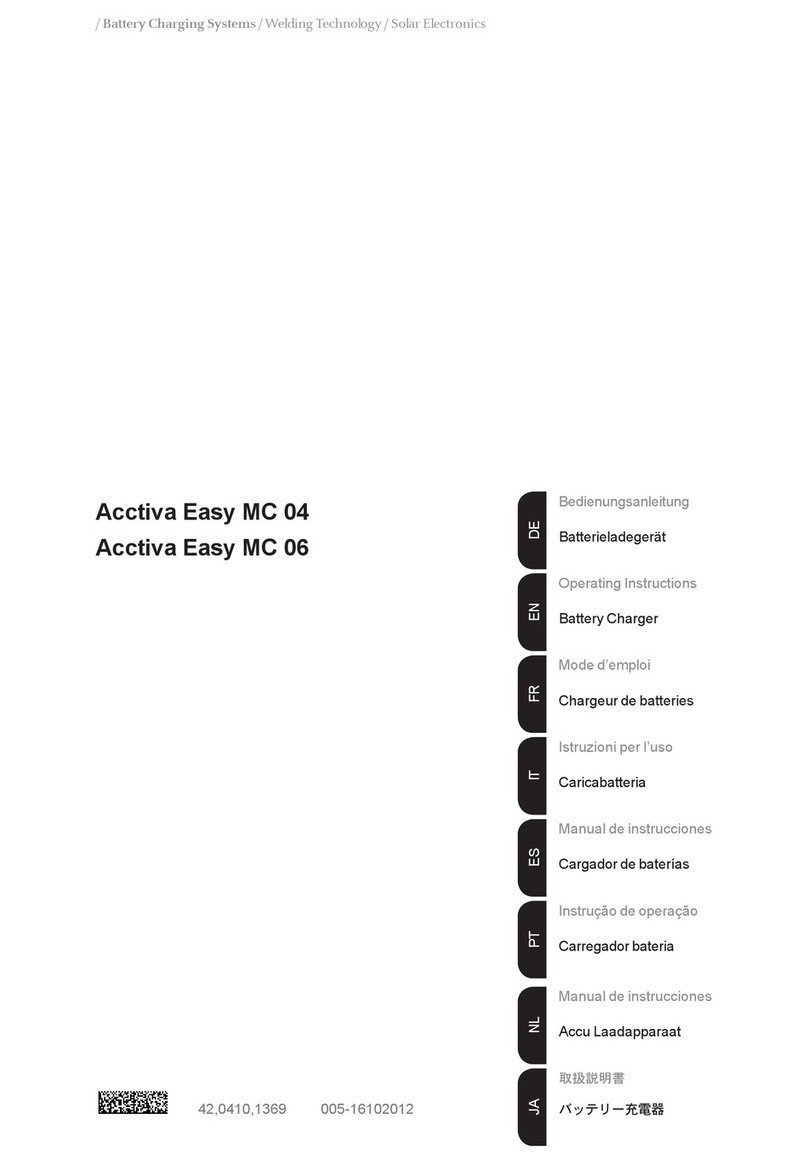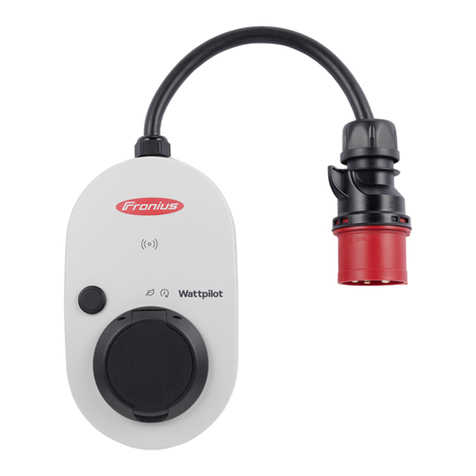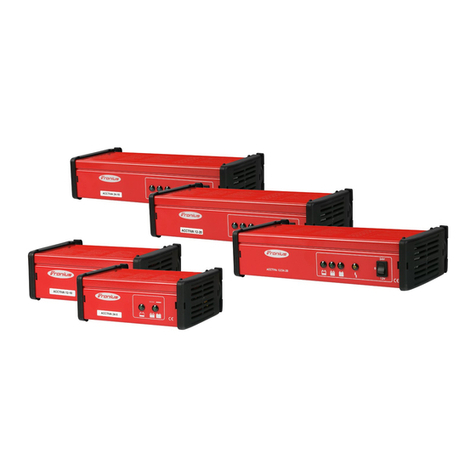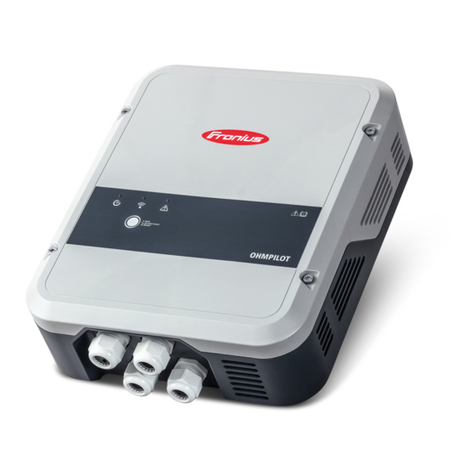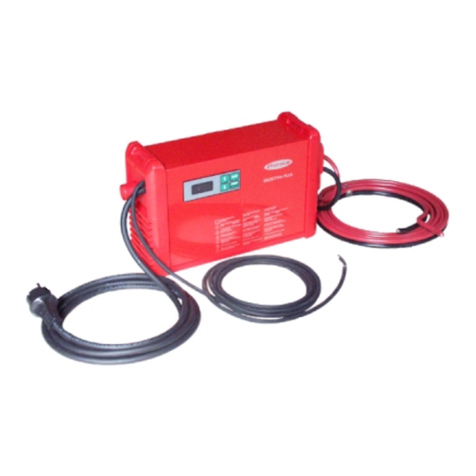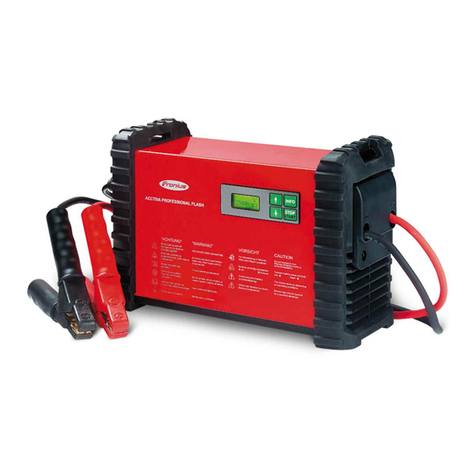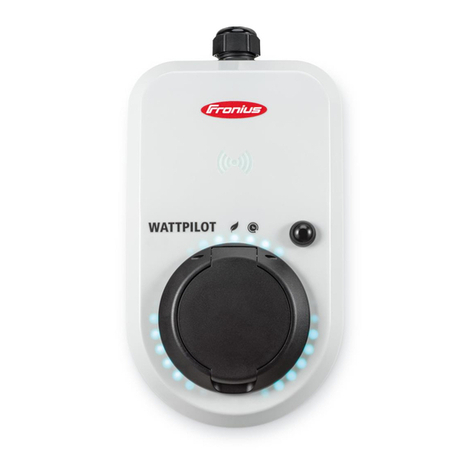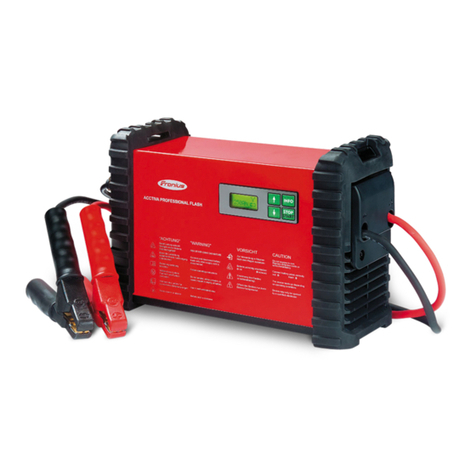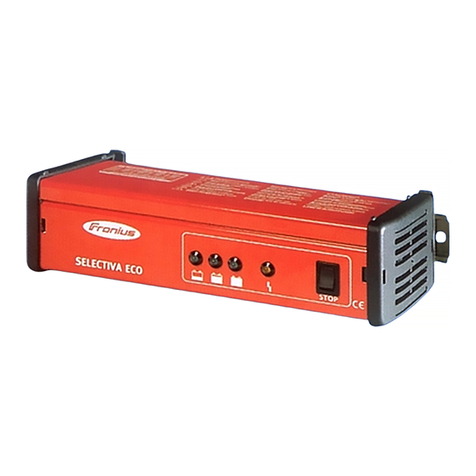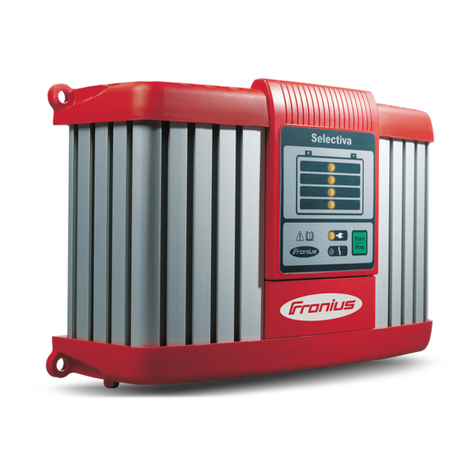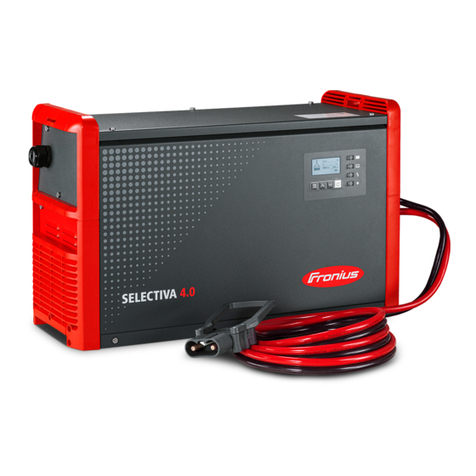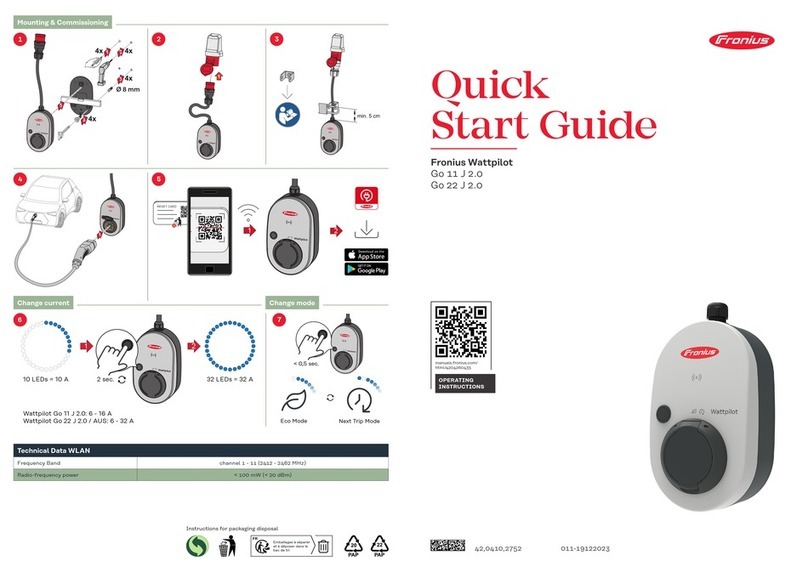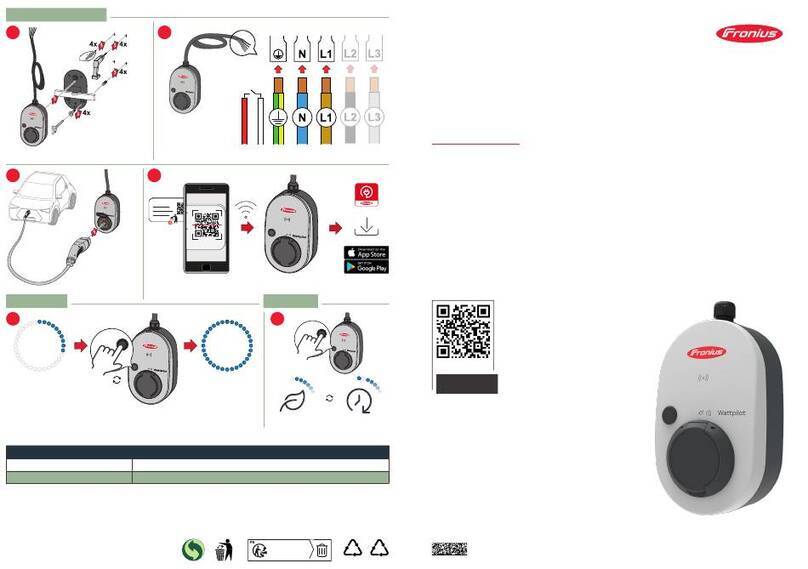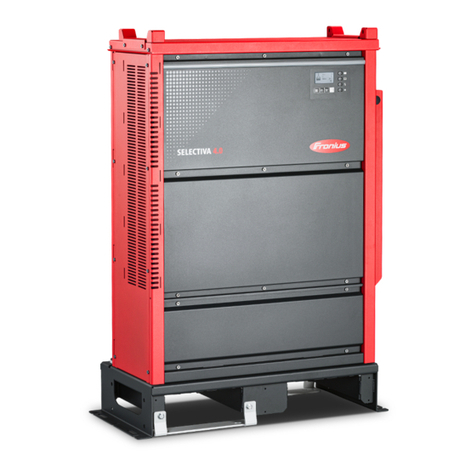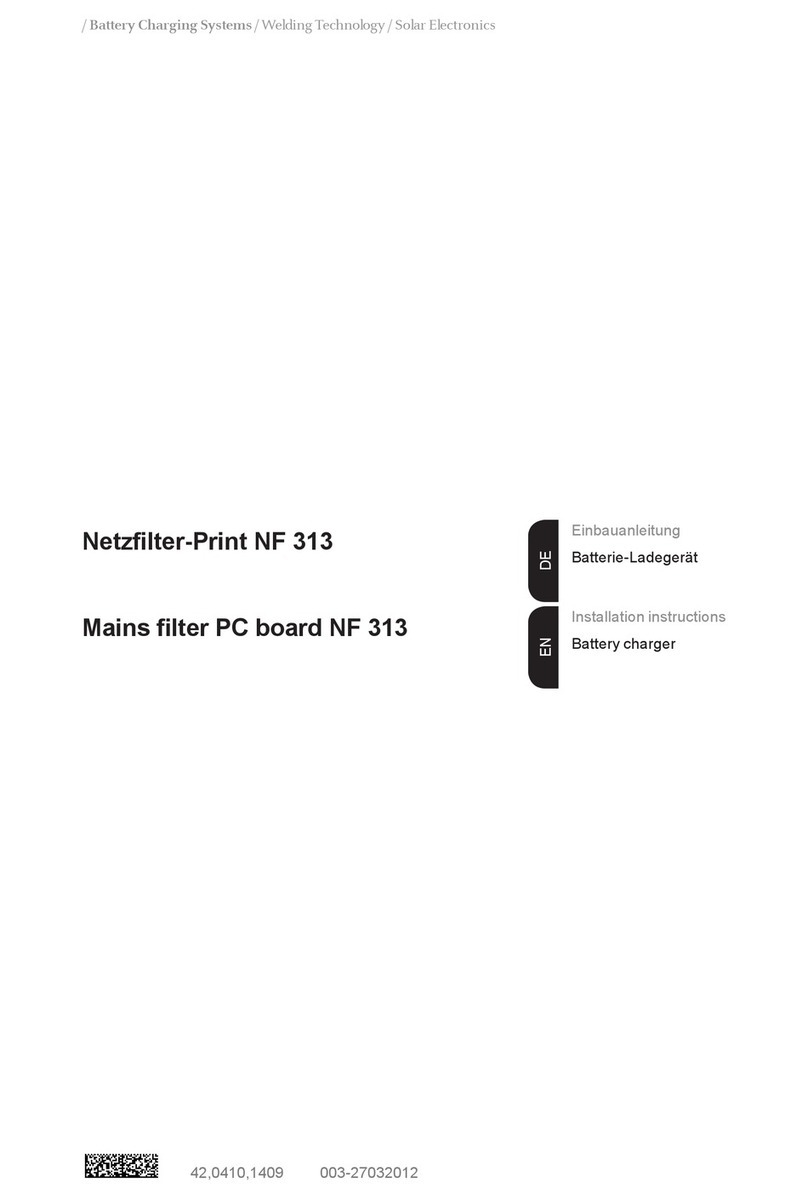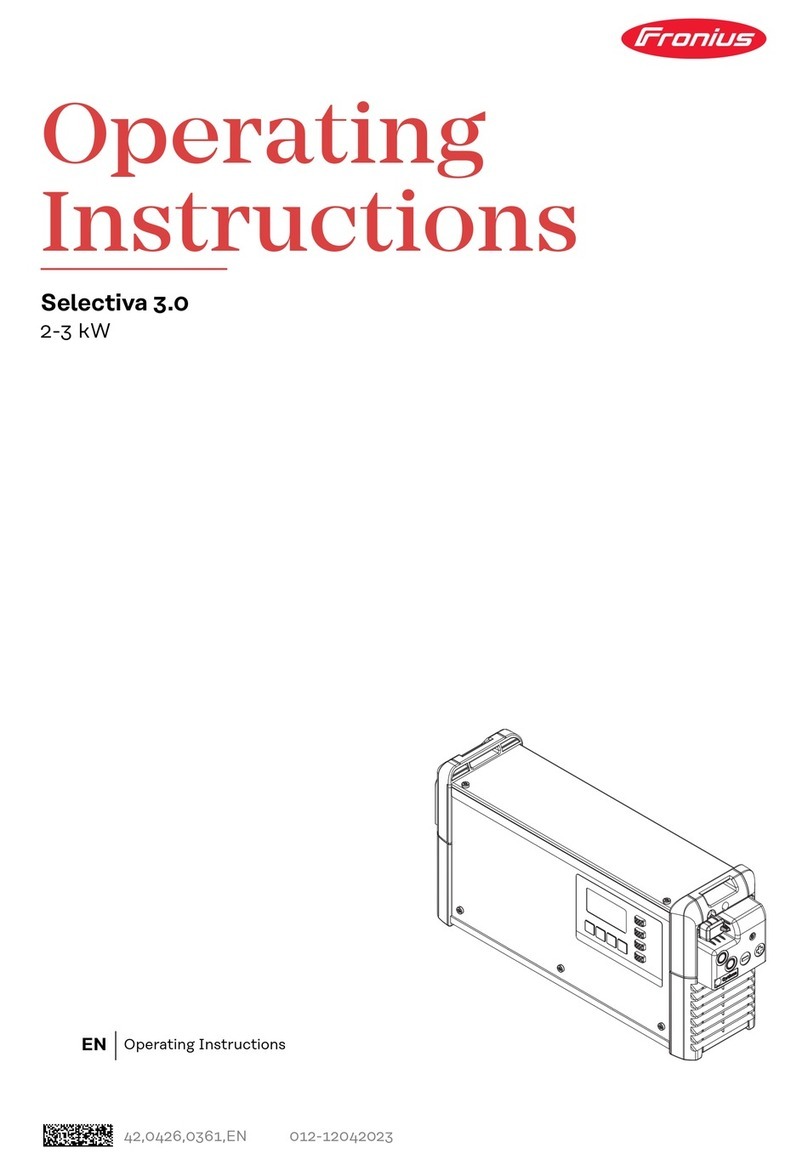
All cables and leads must be secured, undamaged, insulated and adequately di-
mensioned. Loose connections, scorched, damaged or inadequately dimensioned
cables and leads must be immediately repaired by authorised personnel.
Danger due to
acid, gases and
vapours
Batteries contain acid which is harmful to the eyes and skin. During charging,
gases and vapours are released that may be harmful to health and are highly ex-
plosive in certain circumstances.
Only use the charger in well-ventilated areas to prevent the accumulation of ex-
plosive gases. Battery rooms are not deemed to be hazardous areas provided that
a concentration of hydrogen of less than 4% can be guaranteed by the use of nat-
ural or forced ventilation.
Maintain a distance of at least 0.5 m (19.69 in.) between the battery and charger
during the charging procedure. Possible sources of ignition such as fire and na-
ked flames must be kept away from the battery.
The battery connection (e.g. charging terminals) must not be disconnected for
any reason during charging.
Do not inhale any of the gases and vapours released under any circumstances -
Make sure the area is well ventilated.
To prevent short circuits, do not place any tools or conductive metals on the bat-
tery.
Battery acid must not get into the eyes or onto the skin or clothes. Wear protect-
ive goggles and suitable protective clothing. Rinse any acid splashes thoroughly
with clean water and seek medical advice if necessary.
General informa-
tion regarding
the handling of
batteries
-Protect batteries from dirt and mechanical damage.
-Store charged batteries in a cool place. Self discharge is kept to a minimum
at approx. +2 °C (35.6 °F).
-Carry out a visual inspection at least once a week or as often as specified by
the battery manufacturer to ensure that the acid (electrolyte) level in the
battery is at the max. mark.
-If any of the following occur, do not start the device (or stop immediately if
already in use) and have the battery checked by an authorised workshop:
-uneven acid levels and/or high water consumption in individual cells
caused by a possible fault.
-overheating of the battery above 55 °C (131 °F).
Protecting your-
self and others
While the charger is in operation, keep all persons, especially children, out of the
working area. If, however, there are people in the vicinity,
-warn them about all the dangers (hazardous acids and gases, danger from
mains and charging current, etc.),
-provide suitable protective equipment.
Before leaving the work area, ensure that people or property cannot come to any
harm in your absence.
7
EN

